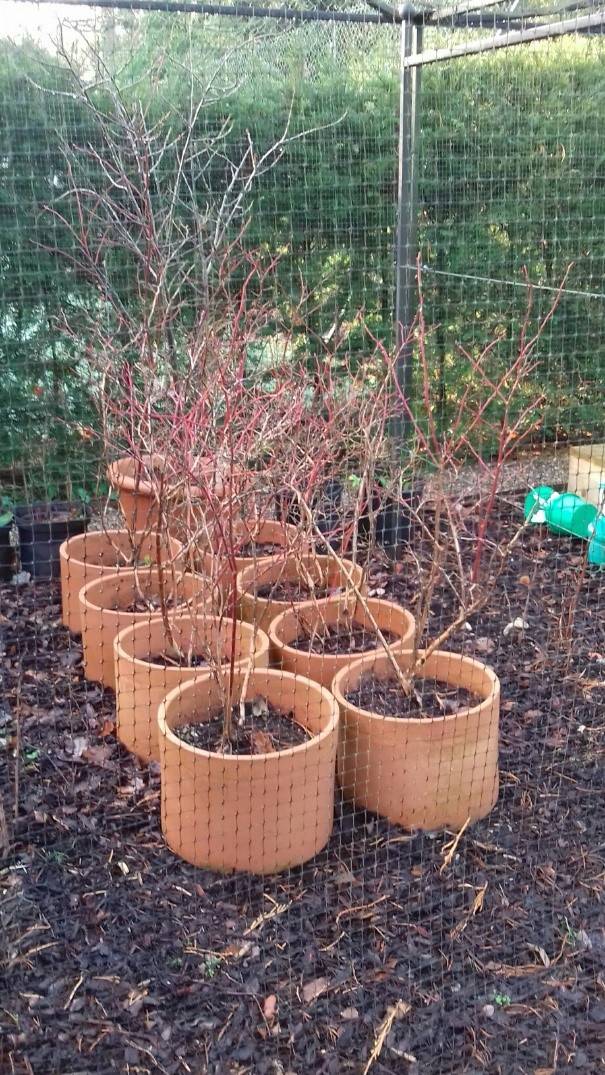January is mulching month in the Kitchen Garden and this week it will be the turn of the blueberries to get a fresh, nutritious top dressing. Most of our blueberry plants are grown in pots standing in our fruit cage. Despite the fact that we have acid soil which blueberries like, the bushes prefer to grow in pots, and this is evident every year here as the pot grown plants always fruit better than those grown in the soil. This week we will remove the top inch or so of soil from each pot and top them up again with fresh ericaceous compost. This will help maintain the acidity levels in the soil as well as adding nutrients for the growing season ahead. The pots will then be finished off with a layer of strulch which will help keep the soils moist through the growing season.
dressing. Most of our blueberry plants are grown in pots standing in our fruit cage. Despite the fact that we have acid soil which blueberries like, the bushes prefer to grow in pots, and this is evident every year here as the pot grown plants always fruit better than those grown in the soil. This week we will remove the top inch or so of soil from each pot and top them up again with fresh ericaceous compost. This will help maintain the acidity levels in the soil as well as adding nutrients for the growing season ahead. The pots will then be finished off with a layer of strulch which will help keep the soils moist through the growing season.
Our other fruit bushes, such as raspberries, blackberries, blackcurrants, whitecurrants and redcurrants will be mulched with well-rotted farmyard manure to provide them with a boost of goodness and help improve the soil they are growing in. We will be giving the rhubarb plants a mulch of well-rotted manure as well this week. It is important to mulch around rhubarb plants, rather than over them as covering the crowns can cause them to rot. A couple of our rhubarb plants are beginning to show signs of life, so after mulching we will place our two rhubarb forcers over the top of the strongest plants, taking care not to use the same plants as last year. We keep a note of which plants have been forced each year so that we can give each plant a couple of years to recover before being forced again. Forcing the rhubarb will give us an early sweet crop in the not too distant future.
There are signs of life all around the garden; snowdrops about to flower, daffodil buds emerging from the soils, and the rhubarb producing pink promising buds. Spring is just around the corner and the work we are putting in now will repay us when the growing season finally begins.



























